This is part two of our series on the history of Birch Cliff Public School, written by an unknown author in 1966 for the school’s 50th anniversary.
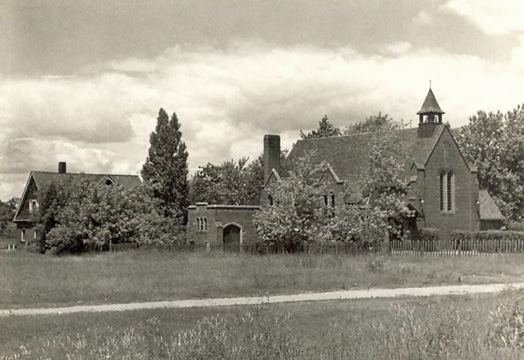
This photo of St. Nicholas Church from 1920 gives you an idea of what Birch Cliff looked like when the school opened. Look at Kingston Road!
A first-day pupil at Birch Cliff Public School recalls that the area was sparsely settled in September, 1916.
West of where he lived, a golf course extended on either side of Kingston Road, and as he trudged towards Warden Avenue, his bookstrap flapping against his knickers he passed dense bush and a few houses.
Widening Kingston Road
Back in 1911 the irate ratepayers of Birch Cliff had objected to the widening of Kingston Road from 12 feet to 24 feet, protesting that it would become a “regular speedway”, but little traffic sped by this September morning.
Radial cars on Kingston Road
Other than an occasional horse and wagon, only the green radial car stirred up a dust.
It flashed past, loaded with commuters to Toronto, having waited in the switching barn across from St. Nicholas Church for the upcoming car on its way to West Hill.
The English-Irish-Scottish homeowners in Birch Cliff in 1916 were mostly artisans and wage-earners and a great number commuted daily to Toronto.
As the boy waved to the conductor he remembered a trip he took on the radial last winter.
When he put his nickel in the fare box with numbed fingers he felt the cosy warmth inside provided by electricity under the seats.
He changed to the double cars at Queen, however, and nearly scorched his golf socks trying to keep warm against the Bakerheater.
Radial car killed horse
There was an aura of adventure travelling by radial, and downright dangerous too!
Back in March a car had killed the horse and damaged the wagon belonging to Mr. Mitchell, the postmaster; and in May a motor-bike caught in the tracks was thrown over the Golf Course fence.
Picnics at Scarboro Heights
On the King’s birthday, however, car after car went by loaded with picnickers bound for the lovely sites between Birch Cliff and Scarborough Heights.
The grocery store near Warden had just opened, the boy was so early that morning – the owner sweeping the front.
Still, ahead he could see clutches of children gathering as they headed toward the new school, and he ran to catch up with a group who had gone to Oakridge School with him, the previous year.
St. Nicholas Church burned down in 1916
As they passed the ruins of St. Nicholas Church, burned in January, they noted with professional interest the progress being made on the new $18,000 structure.
Most of the boys and girls in the neighbourhood went to Sunday School at “St. Nick’s” and were now attending in a nearby private home.
The boys had also watched with eager interest the building of the new school, during the summer. They had climbed over piles of yellow lumber, talked with the workmen, and just yesterday some of the more daring had hoisted each other up to peer through the windows at the shiny new desks and vast, empty blackboards.
“Handsome new building” is “practically fireproof”
Because of the war, shortages and slow-ups had prevented the school’s completion. Only one room was finished of the “handsome new building” projected in an architect’s drawing in a July newspaper.
The caption stated that is was “part of a scheme for a future school of 10 to 12 rooms, and is practically fireproof, the corridor being of concrete with brick dado and fireproof stairs.”
On the first day, only the senior pupils, 45 in all, were able to attend, but there would be four rooms by the following September.
~~~~~~~
Next time…the first Christmas concert at Birch Cliff Public School in 1917. To read Part One of the series, click here. To read Part Three, click here.

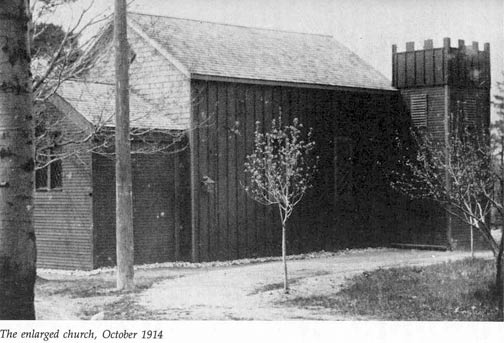
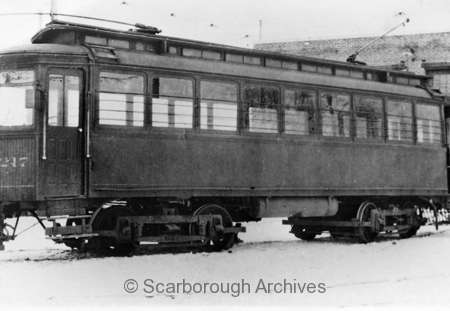
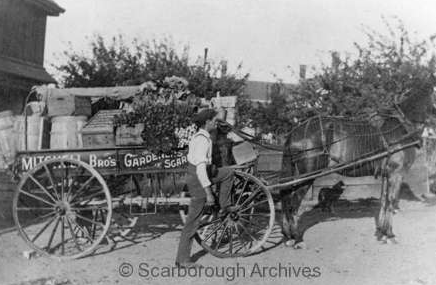
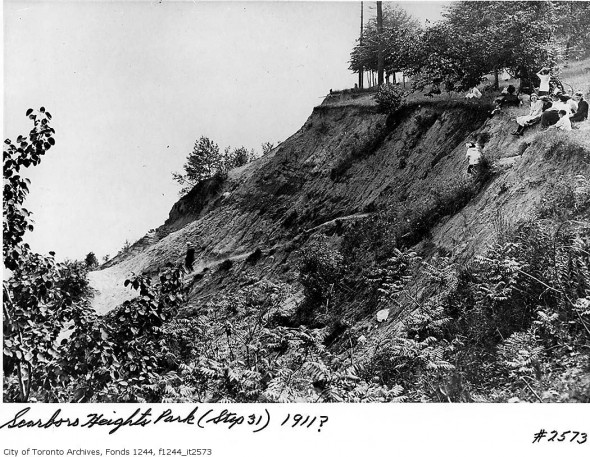
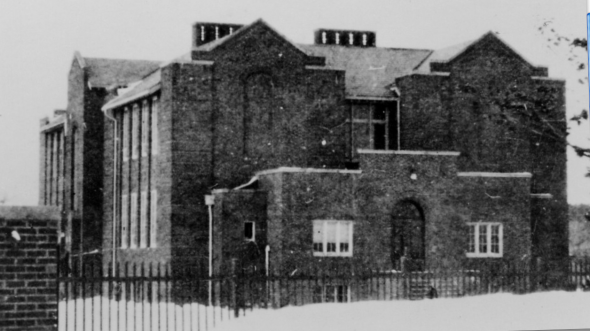
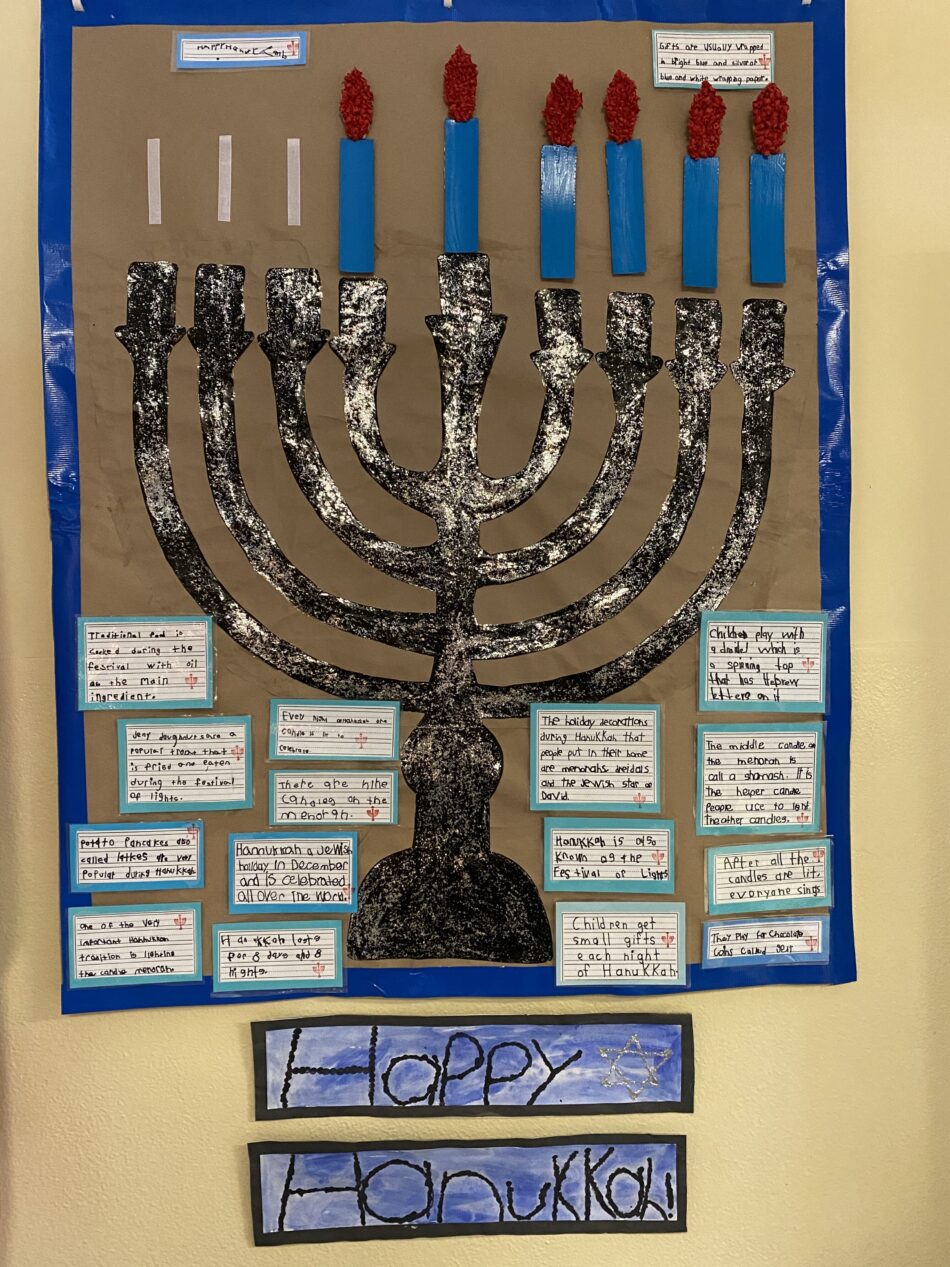

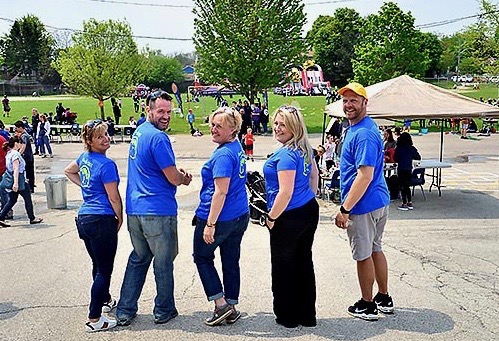
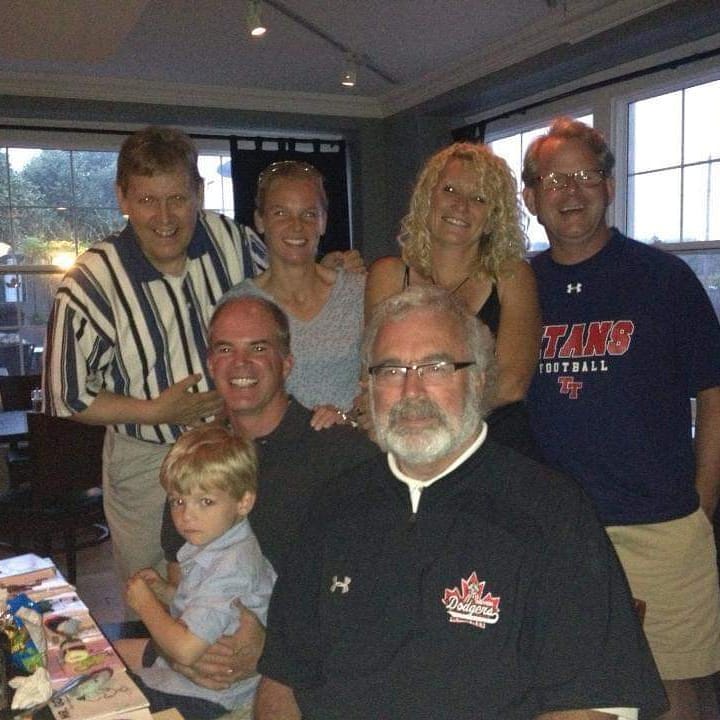
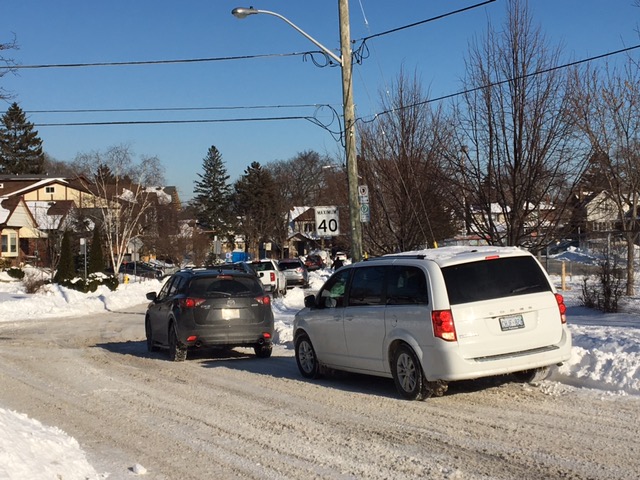
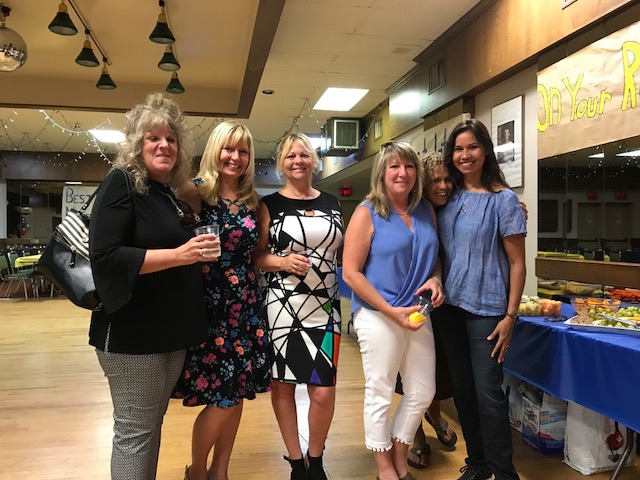
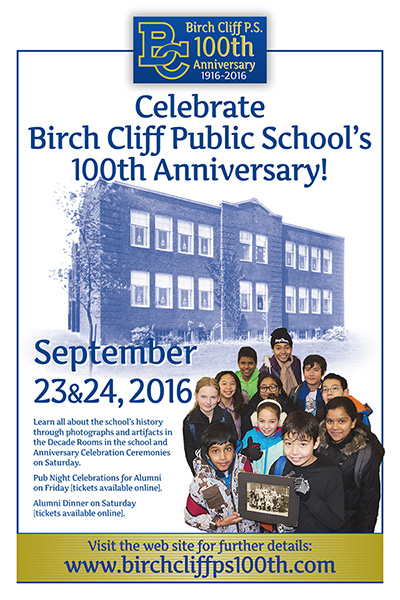
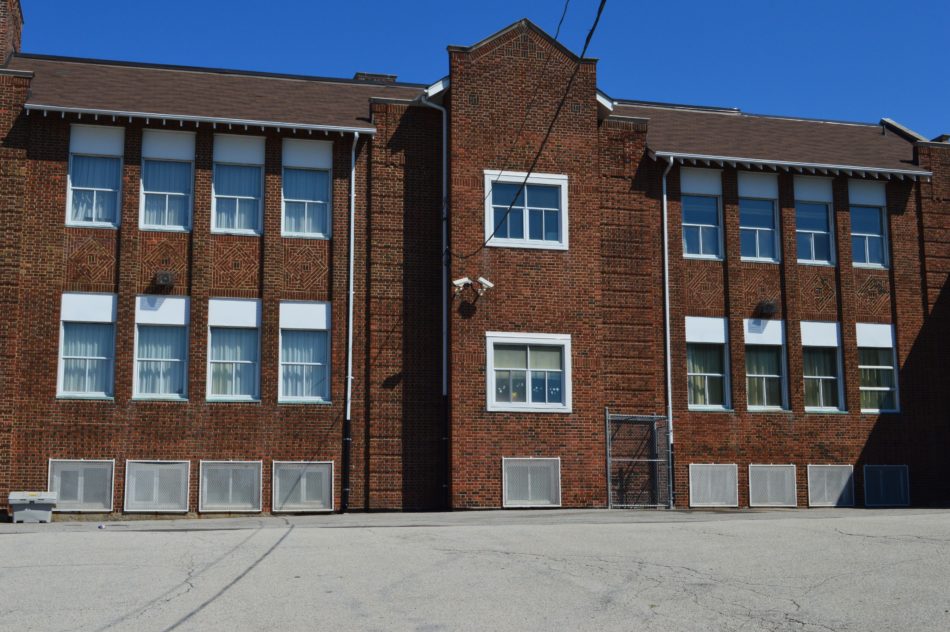
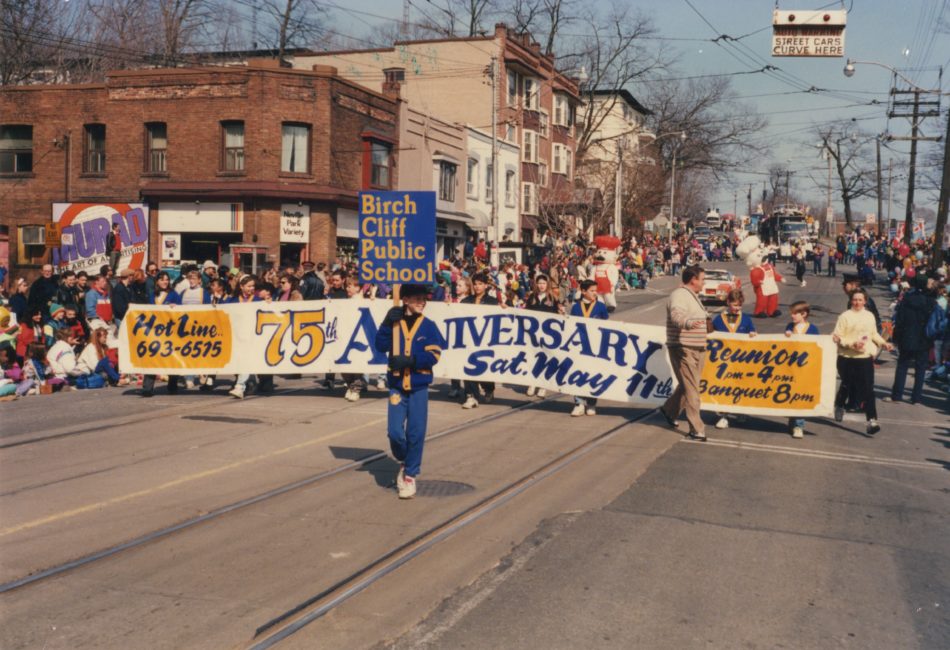
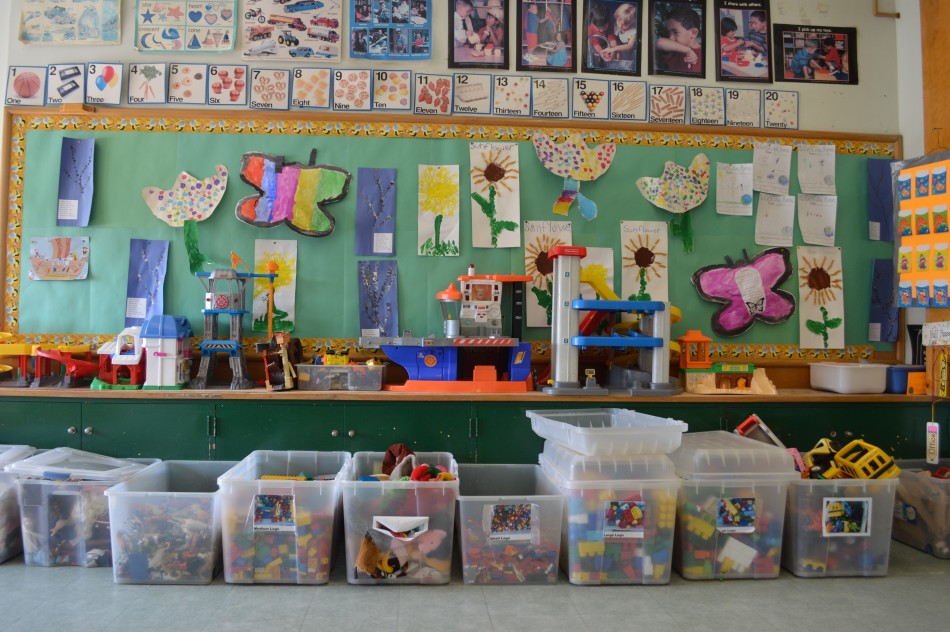
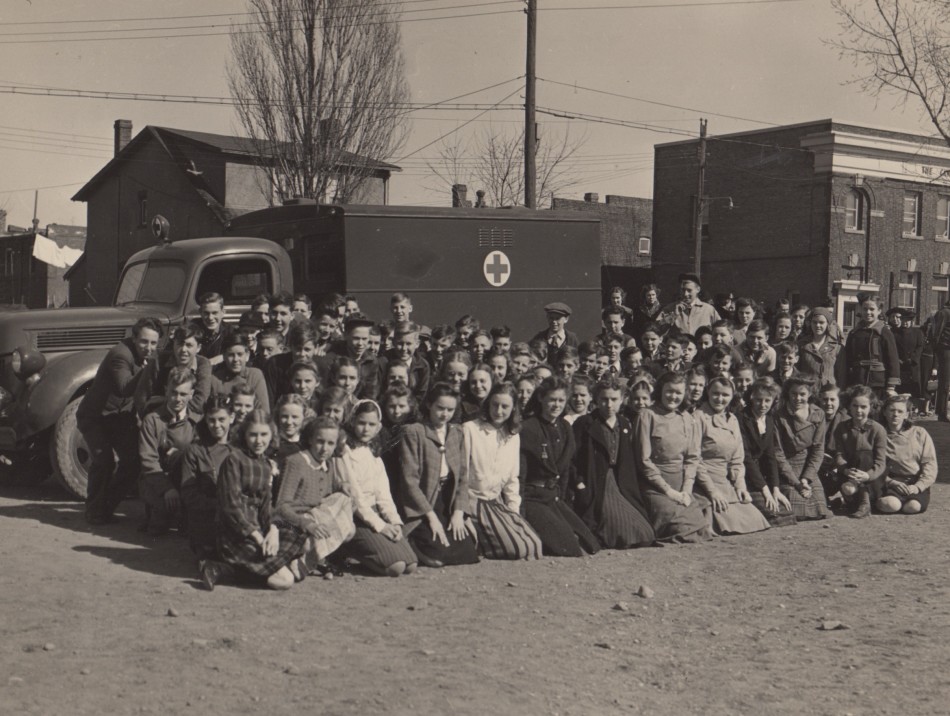
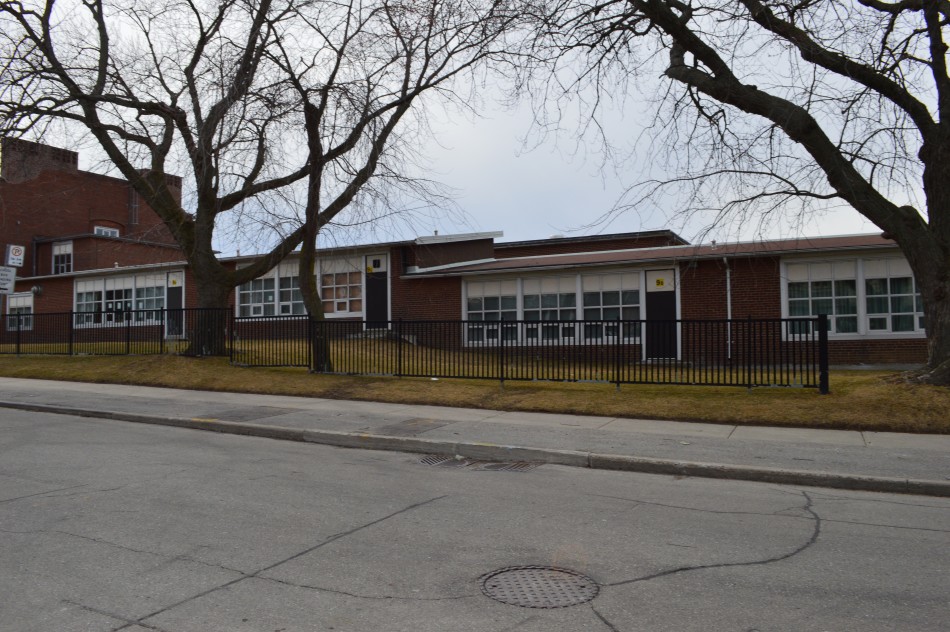
Love your Birch Cliff history series!
THANKS!
Thank you for publishing the Birchcliff PS series.
Reading it has brought a few other memories to mind.
There was no cafeteria in the early 1960s ( Is there one now ? )
Kids were expected to go home for lunch.
The kids that couldn’t go home for lunch had to bring their own and you ate in one of two classrooms depending upon what grade you were in.
Some kids went out to a restaurant called “Mom’s Diner” that was located at the sw corner of Birchcliff and Kingston Road.
There was also a variety store at the nw corner of Kingston Road and Eastwood that did a booming business in candies chocolate bars and potato chips.
No one was employed specifically to monitor the lunch rooms or schoolyard as there is these days instead the teachers did it on a rotating basis.
The school also had a separate entrance for girls on the Birchcliff side but there was no separate entrance for boys.
Both genders could use the main entrance facing the playground.
There was no wandering in and out of school when you wanted either.
When recess or lunch was over a teacher would ring a hand bell.
You would then assemble at either the shared entrance or girls entrance and be marched into school in orderly lines.
Climbing the stairs when entering and exiting the school you were prohibited from holding the railings it was considered a sign of laziness.
When I made the mistake of pointing out to a teacher that my parents said you should always use the railings when on staircases I got my knuckles rapped.
BTW I got my knuckles rapped a lot when I was a kid ‹(•¿•)›
William – I love it when you share you stories of Birch Cliff from times gone by. There is no cafeteria at the school but when my boys went there recently there was a room in the basement for younger kids to have lunch if there was no one to supervise them at home. Maybe someone else can tell us if that’s still the arrangement? A lot of the older students these days will go somewhere on Kingston Road, like Enrico’s Pizza, and grab lunch there. I think I may not be the only one who is really curious about the separate entrances for boys and girls. Do you recall what the rationale was behind that? I don’t know what to say about your comment about having your knuckles rapped for telling the teacher that you were taught to hold the railing. Obviously, corporal punishment is long gone, but in our modern world it’s hard to imagine there would ever be a discussion about holding a staircase railing.. or not. That being said, I remember when escalators first came in and every time I stepped on one, my mom would tell me to “hold the railing”. When I asked why, she told me “In case it stops”. When my mother took us in the subway in the 1960’s, she also ordered us to stand with our “backs against the wall”.
Prior to WW2 the large schools were generally built with separate entrances for Boys and Girls.
They would have originally been segregated in the classrooms and playground also.
The four years I spent at school in Australia the girls sat on one side of the classroom and the boys on the other with an aisle up the middle and we had separate playgrounds.
At some point it was probably decided to make the Boys Entrance at Birchcliff a shared entrance so that the girls didn’t have to go all of the way around the school to get to the playground.
Talking of entrances is Birchcliff wheel chair accessible now?
When I attended school there were only two classrooms you could get to without climbing stairs.
The Kindergarten and Special Education classrooms (Special Education was called something else at the time but I can’t remember what) entered directly onto the playground on the west side of the building.
For any other classroom you had to climb stairs.
I had a friend that needed two canes to walk and he was put in the special education class even though he was quite brilliant it was the only classroom other than kindergarten that he could access without a great deal of trouble.
I remember the basement I spent time in a room there cleaning the blackboard brushes.
Cleaning the brushes was a punishment detail for misbehaving.
But it wasn’t much in the way of punishment so long as you got the job done you were left alone we actualy had fun down there !
During my years at Birch Cliff, The special Ed was called The Opportunity Class and was taught by Mrs Osterhout. She was a wonderful teacher. There was no accessability to classes without using the stairs.There were 4 classes on the first floor and 4 senior classes (5-8) on the second floor. The nurses office was on the second floor. The nurse was Miss Moody, and if your mother forgot to phone the school, or if she felt you needed a visit, She would be on your doorstep, even in snowy weather.
We lined up in twos and by grade, to enter the school. We marched in ( really< I'm not kidding) to a recording played on a wind up victrola, which was operated by Miss McLaughlin, the grade two teacher. It was kept in the main floor hall but we had no problem hearing it outside. It was usually Sousa marches. The girls were on the east side of the school and the boys were on the west. We had a very small place to play, but it was usually skipping or ball against the wall[ an indian rubber ball). The boys had the larger school yard because they usually played sports. There were quite a few portables in the school yard, and boy were they cold. We kept our boots on most days in the winter, and the ink never thawed til the room warmed up. There were usually 45-50 children per class and I don't remember any teachers having difficulty with mouthy kids. If there was a problem, Mr Wideman was the principal, and everyone was scared to death of the strap. It was used often enough and could reduce the bravest boys to tears. When I started Scarborough Collegiate, in 1954, We were told that they expected us to be over achievers, and to cause no trouble, because Birch Cliff put out nothing but the best. Mr. Wideman instilled fear but also respect in all of the students.
This was from Kindergarten in 1945 until I graduated in June of 1953.
So many interesting points here Judy! It’s difficult for families today to imagine a time when there was a school nurse, let alone a nurse who came knocking on your door. And I love the idea of a wind-up victrola playing Sousa marches in order to get the children in the door! I also find the concept of separate playgrounds fascinating, especially the idea that the girls got a smaller playground because they didn’t play sports! I would really like to more about the ink because that’s just inconceivable to many people nowadays. How did it work? Were the pens like the caligraphy pens of today? I am presuming the ink wells went into the holes in the desk, which were still around when I went to school in the 1960s. Who supplied the ink? How often did it get on your clothes and did you get in trouble from your mothers when it did?
To answer your question rgarding the ink, It was permanent, and dark blue and frequently got on one fingers and clothes.I had long ringlets (curls) and the boy behind me occasionally put a curl in the inkwell, and of course it got on my blouse. Not good, because this was during and shortly after WW2, and clothing was treasured, but frequently handed down because it was expensive and not always available.
One of the school articles mentions the home and school sending money to other countries or for disease in our own country. From grade 5 and up, the class on a Friday afternoon had Red Cross time. We were all asked to bring 5 cents as a donation and some of our classmates performed, Singing, Dancing, Reciting etc. One girl took several kinds of dance lessons so was always good entertainment.
In school, when one got a perfect exam, or paper, it went to the office and it was stamped with the round Birch Cliff stamp. If it was REALLY good, it was even signed by Mr, Wideman. It was a source of excitement to get one of these.
Every year , in the spring, all Scarborough schools had speech arts. We chose our own topic and had to research and memorize and do our speech in front of our classmates. It gave a large part of our English mark. Each class chose the three best speeches and they competed among other schools. We also had memory work,some chosen by the teacher and we were allowed to choose a few poems to memorize. A lot were passages from the Bible. This was also part of our english mark. English and math were the two most important subjects. Better stop reminiscing. All for now
Students today still participate in the Speech Arts program and it is organized pretty much in the same way as you just described.
Marching in is what we did in the early 1960s.
But by then the Boys Entrance on the west side had become co ed.
The girls still had a girls only entrance and playground on the east side but they could also use the shared ones on the west side.
Everyone liked Mr Wideman even the Kids that got the belt.
He was fare and just and only used the belt if you deserved it.
I can remember the school nurse making house calls to make sure you realy were sick.
So interesting to read everyone’s comments! I attended Birchcliff Heights 1954 to 1957, Grades 2 – 5. My family left Scarborough 2 weeks before Christmas in 1957 to move to B.C. (by train – huge snow in the middle of winter, and I, just 10, was trainsick all the way across!). At Birchcliff I had Miss McLaughlin in Grade 2 and got in trouble because of the inkwell on my desk – someone had run a pencil around it, leaving marks on the wood, and I (not thinking) did the same. Miss McLaughlin did not hesitate to use her ruler with force – mortification and a very sore hand for me! I remember Mr. Wideman – he was certainly looked up to but I don’t recall fearing him like I did my Grade 2 teacher! I especially went to say my goodbyes to Mr. Wideman my last day there in December 1957 (stressing my mother no end because as a result I got home later than I should have and we had to catch the train!).
the cars ran east from kingston rd along fairview ave.